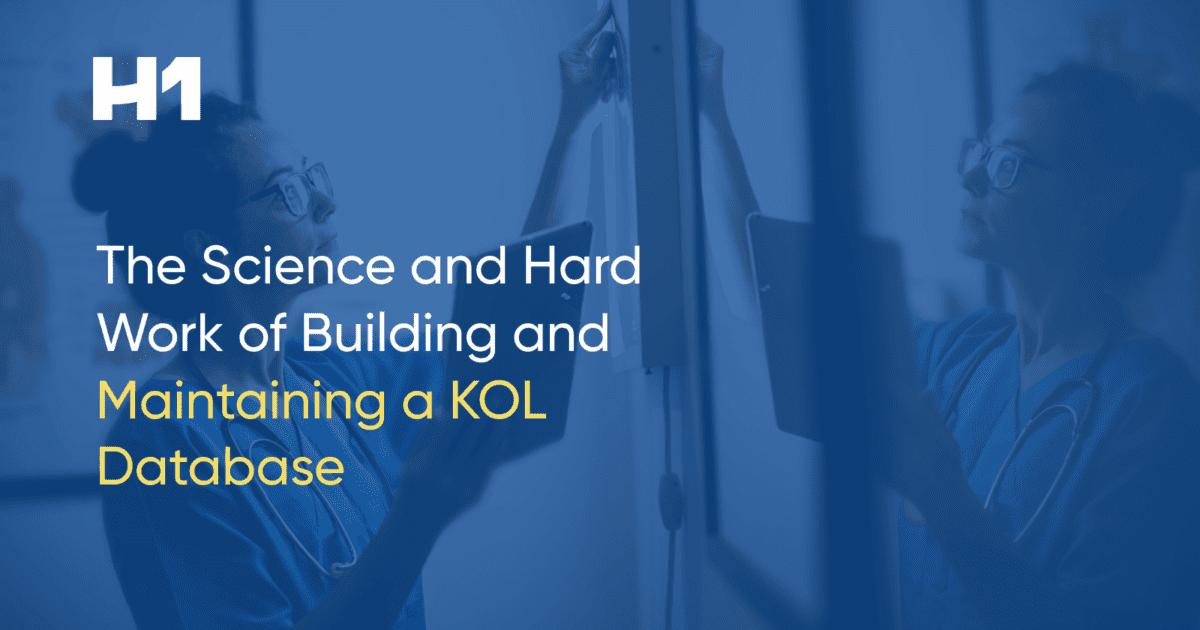Opinion Leader Identification: Big Data to KOL Short List

Engaging the Right Key Opinion Leader
For a pharmaceutical company, the decision to work with a certain key opinion leader (KOL) is very important. Engaging the right KOL is critical in establishing credibility among physicians for a new drug or device, guiding the design of clinical studies, or providing real world evidence – to name but a few objectives. For Medical Science Liaisons (MSLs), identifying, engaging and maintaining successful relationships with KOLs is the most important aspect of their job. To meet this challenge, MSLs must first tackle step one: KOL identification.
Accessing and analyzing information of 100,000s of potential key opinion leaders – physicians, researchers, as well as other experts – is not possible for an MSL. They rely on Internet searches, extended networks as well as information, such as the affiliation of a prospective KOL with a renowned hospital or institute, a prestigious award they won or the number of papers they published, to establish a list of candidates. That list then gets prioritized, passed through filters and plotted in matrices to arrive a short list of KOL candidates.
The problem with this approach is, that the starting list is incomplete and already biased towards people the MSL knows, are affiliated with institutions the MSL thinks highly of, or people who attend the same conferences. In short: the “usual suspects.” Qualified candidates, especially up and coming experts in their fields, or local/regional influencers without a national reputation might never make it onto the original list and will therefore not be considered at all.
Modern technologies allow MSLs to access unprecedented amounts of data about thought leaders turning the process of key opinion leader identification into more of a science than an art. This wealth of data, however, creates a new problem: how can that big data be reduced to a manageable KOL short list in a reasonable amount of time, without breaking the bank. More critically even: what criteria and what weights should be applied to pare down the original big list.
When It Comes to KOL Identification, Every Case is Different
As is often the case, the answer to the question about the perfect KOL selection criteria is: it depends. Key opinion leaders play an important role throughout the drug development process. During the research and pre-clinical phases, KOLs help identify unmet medical needs and pharmacological targets. During the clinical trials, KOLs are involved in designing protocols, answering medical questions, and reviewing and analyzing data. After approval, the role of KOLs shift to building product awareness and educating their colleagues, regulators and payers.
As different as these roles are is as different the criteria that need to be applied to identify a KOL are. The clinical researcher, who one needs to engaged in the pre-clinical phase, has a very different profile from the thought leader who will best explain the advantages of the new drug or device to their colleagues. While published papers and posters, academic awards and grants are valuable indicators for a researcher, the ideal KOL for the post-approval phase will stand out because of their years of relevant experience, their practice size, their high-level speaking engagements, or role on advisory committees.
Paring Down the Big Data to Identify the Best Key Opinion Leaders
To identify the best KOLs and avoid costly mistakes a good process looks like this:
- Start with the entire universe of possible key opinion leaders, such as those captured in H1’s KOL identification platform.
- Quickly reduce the number of possibilities by eliminating all KOLs outside of the therapeutic area of interest.
- Further pare down the list by applying high-level criteria. E.g., If finding a regional KOL is the goal, a geographic search will provide only KOLs in the target area.
- Use keyword searches and filters, such as for specific clinical trials or payments received to further hone in on the list of thought leaders that are good KOL candidates.
Curated indicators in the HCP Universe database make identifying specific types of KOLs easy. Looking for an up and coming KOL, the “Rising Star”-ranked KOLs are worth looking at. Searching for an outstanding researcher, the “Research Scholar” indicator highlights researchers with an excellent publication record, the “Clinical Investigator” has an exceptional list of clinical trials and the “Industry Collaborator” is a thought leader who has worked closely with the industry.
This process allows an MSL to start very broad but boil huge amounts of information down to a manageable short list quickly and repeat the process if their needs change. Periodically repeating the search will allow an MSL to review whether new experts have emerged that should be engaged and allows for flexibly managing and adjusting the KOL roster.
